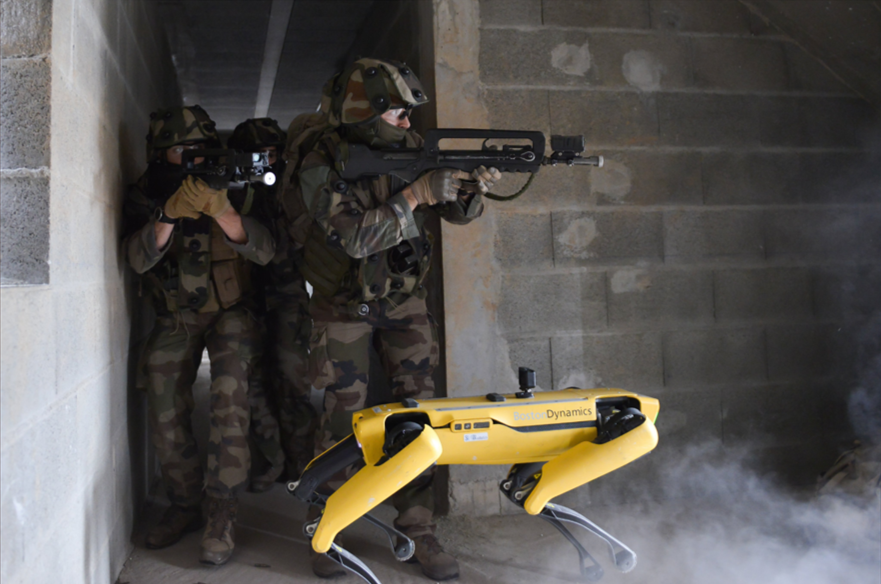French Army Tests Robots in Combat Scenarios
On 30-31 March, the French Saint-Cyr Coëtquidan military academy ran tests employing various robots and UGV (unmanned ground vehicles) alongside French troops.
A multitude of robotic platforms were tested. Boston Dynamic’s 30kg dog-like Spot was deployed as a reconnaissance platform. The 4-wheeled UGV ULTRO pack robot from Nextr also saw action, as did Shark Robotics’ multipurpose BARAKUDA drone. The BARAKUDA was configured to carry a shield to protect advancing troops from incoming projectiles. The auto-cannon-carrying remote-controlled tracked OPTIO X-20 from Estonian Milrem Robotics was also put through its paces.
The aim of the exercise was to make the academy students consider the potential use of robots in both offensive and defensive scenarios. These included an assault on crossroads, defensive action under day and night conditions as well as urban combat. Each scenario was conducted twice: once with robot assistance and once without. The most general lesson learned was that by deploying robots, the army sacrifices some speed in exchange for making soldiers safer.
Interestingly, battery life proved to be a major limitation for the usefulness of some platforms like Spot but the ability to send the robodog forward for reconnaissance instead of a human soldier had the potential to save said soldier’s life.
Boston Dynamic’s Spot is arguably one of the most widely known and covered robots to be developed in recent years. The New York Police Department has started using a Spot equipped with a robotic arm while NASA has been testing the potential of the robot to be used on missions to Mars. Initially, development saw funding from DARPA but the company has since been moving away from its military past and as part of its terms of service prohibits the weaponization of its systems or the use of Spot to harm humans.
For the most recent exercises, Spot was leased to the French army through a middleman without the knowledge of Boston Dynamics. The company has not yet decided whether it should allow its robot to be used in support roles such as reconnaissance.
The two day exercise certainly appears to have been an interesting practical experiment with some of the current leading robot and UGV platforms. While militaries have begun to field large, small and even micro aerial drones fewer have yet to deploy robots or UGVs. The potential of the systems, once their weaknesses are identified and mitigated, seems promising.

